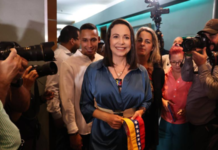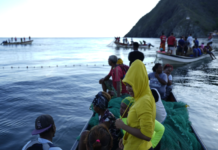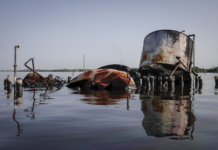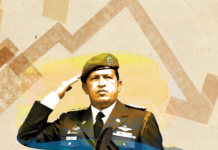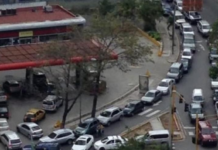[ad_1]
By the time his death at 90 was announced late Friday, Fidel Castro had become what he most feared during a prolonged and dramatic life — an irrelevancy, a living museum piece trotted out for ceremonial occasions, but no longer the man in charge of Cuba’s destiny. He was the living embodiment of the Cuban Revolution, to be seen and applauded in public functions, but real power had passed to his brother Raúl and others in the inner circle.
Well before Castro left the scene, the revolution he created was itself long since dead, an empty slogan few could believe in. Castro himself had become a pathetic, shuffling figure who outlived his own era while Cuba began to take the first steps toward a transition that its once fierce leader swore would never take place.
His great triumph was merely to have survived for so long, to have outlived so many adversaries. Nearly from the start, Castro made it his mission to challenge the might of the United States, a role he relished. He managed to confront and bedevil 11 American presidents — one-fourth of all American chief executives — while deftly avoiding the kind of strategic mistake that would provoke a military strike against him.
All the while, he commanded public attention. He put Latin America on the map in a way that no one else ever had, becoming a major actor on the world stage during all or parts of seven eventful decades. From the moment he burst onto the scene with a dramatic if failed attack on the Moncada Barracks on July 26, 1953, to his last public appearance, he was a significant news figure. His pronouncements and actions were pored over by contemporaries on every continent.
Unceasing defiance of the American Colossus made Castro a hero to millions, including many who did not otherwise share his left-wing politics. He was the most influential figure of the 20th century in Latin America, the lion whose roar gave voice to the resentment and grievances, real and imagined, that accumulated over decades as the United States rose to become the dominant force in the hemisphere. At the height of his power in the 1970s, his admirers in the Third World — disregarding his status as a Soviet pawn — chose him to lead the Non-Aligned Movement.
But all of his prominence and power came at a terrible cost to the Cuban people, and therein lies his most lasting, tragic and unforgivable legacy.
The history of Latin America is replete with the names of dictators who ruled by fear and violence, including some of Castro’s contemporaries, from Alfredo Stroessner in Paraguay to Rafael Trujillo in the Dominican Republic. But Fidel Castro outdid them all because his regime was the most oppressive — and most enduring. Petty tyrants like Peru’s Alberto Fujimori and Venezuela’s Hugo Chávez came and went. Castro endured.
The painful price that his suffocating tyranny exacted on the Cuban people is impossible to measure, but safe to say that there is hardly a single freedom recognized by civilized countries around the world that Fidel Castro did not violate.
In one of the great paradoxes of the era, Castro successfully posed as a champion of the downtrodden around the world, even as he trampled on the rights of downtrodden Cubans. His many admirers abroad chose to ignore, and illogically justify, his denial of freedom to the people of Cuba even as they fought for the right to enjoy civil liberties and freedoms at home.
Revolutionary violence and human-rights abuses were there from the start. First came the summary executions of those who supported the Fulgencio Batista regime that Castro overthrew — and later of counter-revolutionaries, many of whom had fought against Batista at Castro’s side. Castro’s firing squads executed upwards of 18,000 Cubans. Others were sent to unendurably wretched prisons to serve 20-plus years.
This laid the groundwork for the regime’s machinery of repression. Its diabolical aim: to instill absolute obedience through fear. Gays, Jehovah’s Witnesses, outspoken Catholics and those deemed anti-social for disagreeing with Castro doctrine were sent to labor camps for “reeducation.’’
Later, mobs known as Rapid Response Brigades berated, hurled rocks at and assaulted Cubans leaving during the Mariel boatlift.They did the same to regime critics. State security agents infiltrated, divided and destroyed dissident organizations. They psychologically and physically tortured countless individuals who had been denounced as threats to the regime.
Castro spies came to America, too. Five Cuban spies were convicted in the murder of four Brothers to the Rescue, unarmed South Florida fliers, looking for Cubans at sea who were shot down on Raúl Castro’s orders by Cuban MiGs in 1996.
Fidel Castro destroyed civil society, replacing social cohesion with neighborhood committees that spied on Cuba’s citizens. Elections? Never in more than 60 years; only the Communist Party existed. Independent newspapers and free expression? None. Only state organs of propaganda.
Freedom to worship was restricted, and the institutional church was treated with suspicion and disrespect. Private property was abolished. Public and private school systems were replaced by indoctrination in schools designed to serve Communist ideology.
And he also ruined an economy that had been the third-largest in Latin America when he took power by promoting disastrous agrarian and economic experiments. The damage became most painfully apparent after a disintegrating Soviet Union ended its massive subsidies to Cuba in 1991.
Withdrawal from a $4-billion-a-year habit wasn’t pretty. Cuba’s centralized economy went into a tailspin, and Castro the communist was forced to turn semi-capitalist — although he never yielded the controlling share. He sought joint ventures, primarily with European and Canadian investors. He rented out Cuban workers, whose wages in Cuban pesos amounted to some 5 percent of what the foreign investors paid for their labor; Castro kept the rest. He also legalized the use of the U.S. dollar, which created class divides between the “haves” who received remittances from abroad and the “have-nots” without access to the valued currency.
But none of this was enough to satisfy increasingly restive Cubans, so after an intestinal illness forced him to cede control to brother Rául in 2006, the government made necessary changes to the economy that Fidel would once have condemned — throwing the doors open to tourism, adjusting to the demands of needed foreign investors and allowing more Cubans to become self-employed and own small businesses.
While economic transition remained a work in progress, the police state created decades ago by Cuba’s Soviet masters and their allies for the regime’s benefit remained intact. It is Fidel Castro’s most enduring creation.
A recent report from Human Rights Watch could have been written decades ago: “Short-term arbitrary arrests of human rights defenders, independent journalists and other critics have increased dramatically. Other repressive tactics employed by the government include beatings, public acts of shaming, and the termination of employment.”
From the beginning, many Cubans chose to flee rather than to tolerate the lack of freedom as Castro effectively turned Cuba from a nation of grateful immigrants into a country of desperate emigrants. In Miami-Dade County alone, the population either born in Cuba or descended from Cuban immigrants in 2010 was 856,000, with some estimates of the worldwide diaspora at 3 million.
Now, after surviving countless assassination attempts, communism’s bankruptcy, economic collapse, his failed revolution, Fidel Alejandro Castro Ruz has passed into history.
This is a moment to celebrate the prospect of a future without Fidel Castro. He should be remembered as the cynical dictator who nearly destroyed Cuba for the gratification of his own ego. Building a free, open and prosperous democracy would be the Cuban people’s greatest, most satisfying payback.
The totalitarian dictator is dead. May his police state and inhumanity be buried along with him.
[ad_2]
fuente
